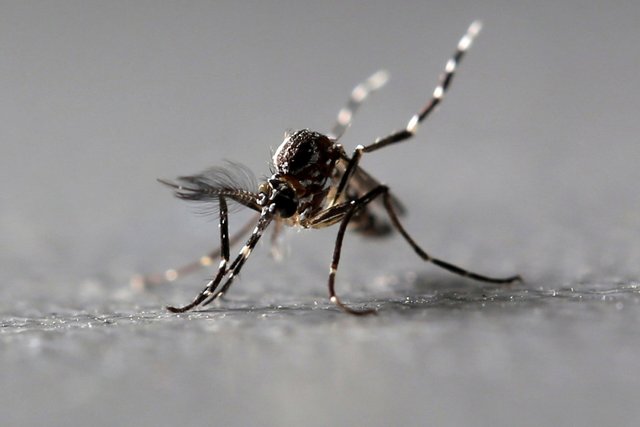Zika and Different Illnesses prevented as the Drones Disperse Swarms of Sterile Mosquitoes.

image: credit spectrum.ieee.org
Aswe all know that the deadliest creature on Earth, by a long shot, is the mosquito. Every year, mosquitoes taint around 700 million individuals with ailments, for example, intestinal sickness, dengue fever, West Nile infection, and Zika. A large number of individuals bite the dust every year from mosquito-borne sicknesses, and a considerable lot of those illnesses can't be cured with drugs. It's best to abstain from being chomped in any case, yet this is ending up more troublesome as the creepy crawlies extend their range, moving north with warming atmospheres.
For a considerable length of time, government offices and philanthropic associations have endeavored to keep the spread of mosquito-borne sicknesses in creating nations by showering substantial zones with bug sprays. Yet, that procedure is costly, particularly as mosquitoes create protection from regularly utilized chemicals. The United States Agency for International Development (USAID) has started to search for other mosquito control strategies.
One approach is to breed male mosquitoes in imprisonment, open them to radiation that renders them sterile, and discharge them into nature. These mosquitoes, being mosquitoes, don't comprehend that they can never again effectively recreate, and do their best to get it going in any case. In sufficiently expansive numbers, the sterile guys will outcompete wild guys for female mosquitoes, which can lessen neighborhood populaces by as much as 90 percent.
This strategy has been around for 50 years, however spreading sterile mosquitoes in the creating scene is a test. Streets are nonexistent or in poor condition, so it may not be conceivable to discharge bugs from an auto or truck, and utilizing a ran air ship is excessively costly.

image: credit thenypost
In 2016, USAID subsidized an association called WeRobotics, which has double central command in Washington, D.C. also, Geneva, Switzerland, to design a framework that can send sterile mosquitoes from self-ruling automatons. USAID and WeRobotics need to see whether automatons can supplant traditional airplane as an approach to oversee mosquito populaces more than many square kilometers. "We plan to enormously build the region that we can cover by utilizing rambles," says WeRobotics' fellow benefactor Adam Klaptocz.
Klaptocz and his partners began WeRobotics to investigate ways that automatons can have a positive social effect. In the course of recent years, they've set up group apply autonomy labs in creating countries around the globe. WeRobotics and its accomplices have utilized automatons to delineate in Nepal, convey prescription in Peru, and facilitate philanthropic endeavors in the Caribbean after Hurricane Maria.
The organization's most recent undertaking is trying a model automaton based mosquito control framework in South America. The test here isn't simply the automaton—it's the way you convey and discharge mosquitoes from that automaton. "Mosquitoes are extremely delicate creatures," Klaptocz clarifies. "In the event that you put a huge number of them into a little box, they will harm themselves, and harmed mosquitoes won't have the capacity to contend with wild mosquitoes."
The objective is to pack however many mosquitoes as could be allowed into the automaton. Be that as it may, bunching is an issue on the grounds that the creepy crawlies shape "a major gathering of legs and wings," he says. The trap, as per Klaptocz, is to keep them inside a precooled compartment: "Between 4 °C and 8 °C, they'll nod off, and you can pack them up reasonably thickly."
It's additionally essential to control the arrival of the mosquitoes, as opposed to dumping them out at the same time. "We attempted distinctive frameworks to get the mosquitoes out of the holding canister, including vibrations and a treadmill," he says. "At the present time, we're utilizing a turning component with openings through which singular mosquitoes can fall." Once the mosquitoes drop out of the canister, they spend a couple of moments in an auxiliary chamber warming up to the outside air temperature before leaving the automaton, to ensure they're wakeful and prepared to fly.
It's not yet obvious that automatons will be substantially more compelling than people with knapsacks at scattering mosquitoes, says Robert Malkin, a specialist on new social insurance advancements at Duke University. Furthermore, supporting any sort of operation in remote regions with little foundation will be a test. "Be that as it may, it could work," he says. "It sounds like a cool venture."
WeRobotics will direct its initially tests for USAID with disinfected male mosquitoes in late 2017 or mid 2018, some place in South or Central America. "Our following stage is running controlled tests, where we stamp the bugs, discharge them, and recover them in traps to quantify whether they're sound or not," says Klaptocz.
WeRobotics' organization framework works with various types of mosquitoes and any model of automaton. For future undertakings, it could convey and discharge male mosquitoes that have been hereditarily adjusted to have sterile posterity; male mosquitoes that have been contaminated with a microscopic organisms called Wolbachia pipientis, which makes their posterity sterile; or female Wolbachia-tainted mosquitoes, which are more averse to transmit ailments when they nibble.
Be that as it may, before they start any live mosquito testing, WeRobotics must work with nearby groups to win their help. "We're attempting to control malady vectors," Klaptocz clarifies. "However, basically, what we're doing is discharging an entire bundle of mosquitoes into groups and flying automatons over them. Engagement with these groups must be done from the earliest starting point, by conversing with individuals and including them all the while."
Hi! I am a robot. I just upvoted you! Readers might be interested in similar content by the same author:
https://steemit.com/science/@jagjitsingh/zika-and-different-illnesses-prevented-as-the-drones-disperse-swarms-of-sterile-mosquitoes